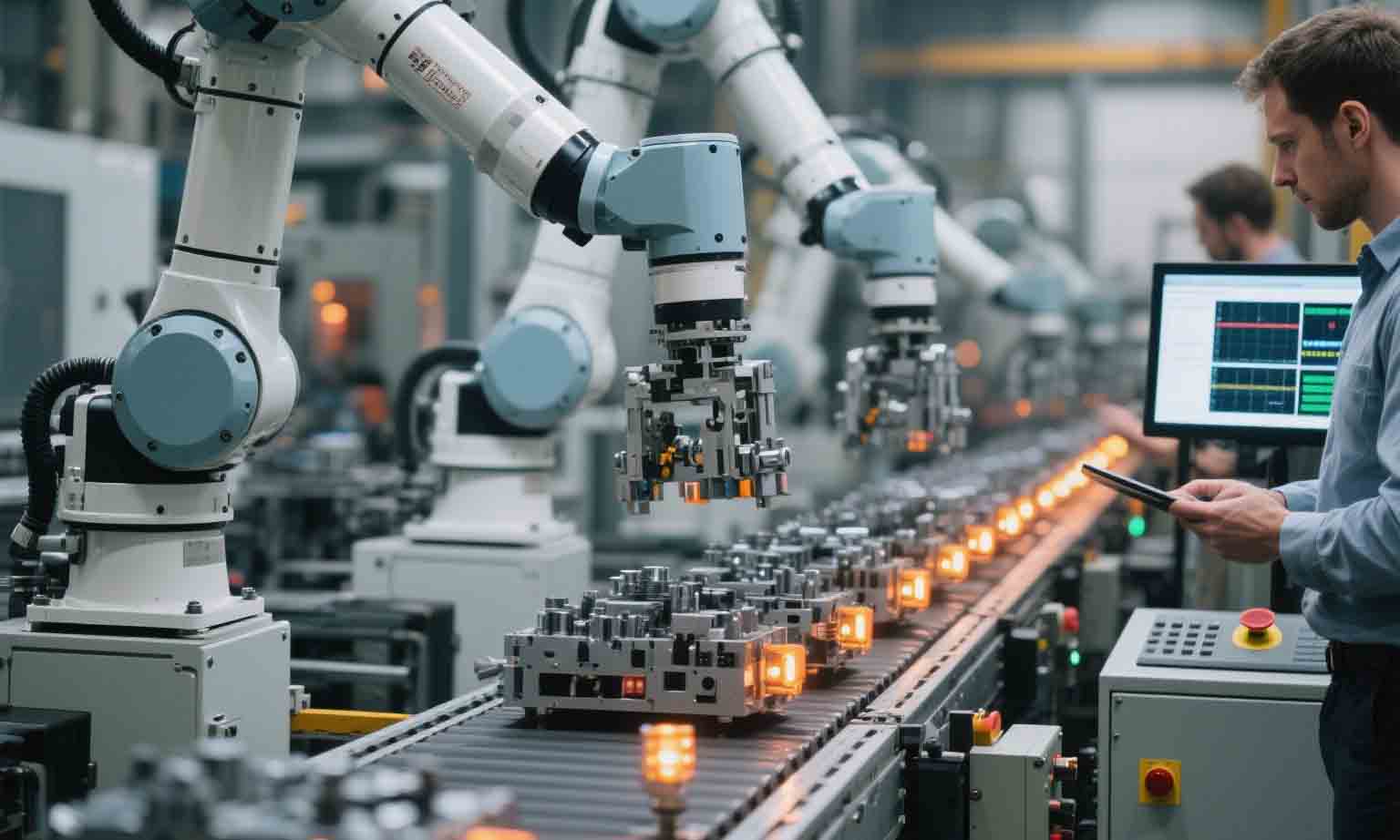Artificial Intelligence in Healthcare: Revolutionizing Medicine Through Innovation
C 2025-06-09
The integration of artificial intelligence (AI) into healthcare represents one of the most transformative advancements in modern medicine.
Brief
The integration of artificial intelligence (AI) into healthcare represents one of the most transformative advancements in modern medicine. By leveraging machine learning, natural language processing, and predictive analytics, AI is reshaping diagnostics, treatment planning, drug development, and patient care. As healthcare systems worldwide grapple with rising costs, workforce shortages, and increasing demand for precision medicine, AI emerges as a powerful tool to enhance efficiency, accuracy, and accessibility.
Enhancing Diagnostics and Medical Imaging
AI’s most immediate impact lies in diagnostics. Algorithms trained on vast datasets of medical images—such as X-rays, MRIs, and CT scans—now rival or even surpass human radiologists in detecting anomalies. For instance, Google’s DeepMind developed an AI system capable of identifying over 50 eye diseases with 94% accuracy, while startups like Zebra Medical Vision use AI to detect early signs of cancers and cardiovascular conditions. These tools reduce diagnostic errors, accelerate turnaround times, and alleviate the burden on overworked clinicians.

Accelerating Drug Discovery
Traditional drug development is notoriously slow and costly, often taking over a decade and billions of dollars. AI streamlines this process by predicting molecular interactions, identifying potential drug candidates, and optimizing clinical trial designs. Companies like Insilico Medicine and BenevolentAI employ generative AI to design novel molecules, shortening preclinical phases by years. During the COVID-19 pandemic, AI platforms rapidly analyzed existing drugs for repurposing, leading to the identification of dexamethasone and baricitinib as effective treatments.

Personalized Treatment Plans
AI enables precision medicine by analyzing genetic, environmental, and lifestyle data to tailor treatments to individual patients. IBM Watson for Oncology, for example, cross-references a patient’s medical history with global research to recommend personalized cancer therapies. Similarly, AI-powered wearable devices, such as the Apple Watch or Fitbit, monitor real-time health metrics, alerting users and physicians to irregularities like atrial fibrillation or hypoglycemia.

Revolutionizing Telemedicine and Remote Care
The COVID-19 pandemic accelerated the adoption of telemedicine, and AI is amplifying its potential. Chatbots like Babylon Health triage patients via symptom checks, while AI-driven platforms analyze electronic health records (EHRs) to prioritize urgent cases. In rural or underserved regions, AI bridges gaps in healthcare access by enabling remote diagnostics and virtual consultations. For instance, India’s Aravind Eye Care System uses AI to screen diabetic retinopathy in remote villages, preventing blindness through early intervention.
Addressing Ethical and Practical Challenges
Despite its promise, AI in healthcare faces significant hurdles. Data privacy concerns, algorithmic bias, and the "black box" nature of AI decisions raise ethical questions. For example, algorithms trained on non-diverse datasets may underperform for minority populations. Regulatory frameworks, such as the FDA’s AI/ML-Based Software as a Medical Device (SaMD) guidelines, aim to ensure safety and equity. Additionally, the human element remains irreplaceable; AI should augment, not replace, clinicians’ judgment and empathy.

Conclusion: A Collaborative Future
The future of healthcare lies in symbiosis between AI and human expertise. By automating routine tasks, enhancing diagnostic accuracy, and democratizing access to care, AI empowers clinicians to focus on complex, patient-centered decisions. As technology evolves, stakeholders must prioritize transparency, inclusivity, and ethical governance to harness AI’s full potential. In this new era, AI is not just a tool—it is a catalyst for a healthier, more equitable world.
Over 10,000 users are consulting. Click to apply for a trial.
iso25745电梯节能证书,重庆电梯节能有限公司,电梯节能 采购,pfe电梯节能装置,电梯节能减排,电梯节能问题,电梯节能设计,手扶电梯节能模式,电梯节能模式,电梯节能制度,电梯节能标准,电梯节能器,电梯节能装置价格,电梯节能降耗的措施有哪些,电梯节能管理,电梯节能项目,电梯节能产品,电梯节能技术的应用,电梯节能行业,电梯节能设备厂家,电梯设备品牌,电梯运行管理节能措施,电梯节能技术应用,电梯节能技术分析,电梯节能技术服务供应商,电梯节能技术的作用,电梯智能双碳节能箱,山东电梯节能,广东电梯节能,辽宁电梯节能,河南电梯节能,江苏电梯节能,浙江电梯节能,湖南电梯节能,广西电梯节能,上海电梯节能,四川电梯节能,安徽电梯节能,北京电梯节能,湖北电梯节能,天津电梯节能,河北电梯节能,福建电梯节能,陕西电梯节能,山西电梯节能,广西电梯节能,江西电梯节能,新疆电梯节能,黑龙江电梯节能,贵州电梯节能,内蒙古电梯节能,甘肃电梯节能,吉林电梯节能,云南电梯节能,电梯节能措施有哪些,电梯节能等级,电梯节能改造,电梯节能的前提条件,电梯节能等级标准,电梯节能等级分类,电梯节能等级划分,电梯节能等级认证,电梯节能等级认证证书,电梯有效节能,节能型电梯,电梯节能改造方案,电梯节能改造公司,电梯节能改造技术,电梯节能改造效果,常见的电梯节能控制,电梯的节能措施,电梯的节能技术有哪些,电梯节能减排措施,电梯节能系统,电梯节能系统研究,电梯如何节能,电梯节能减排措施包括,电梯节能减排措施方案,电梯节能降耗管理办法,电梯如何节能减排,电梯节能技术的应用,电梯节能技术分析,电梯节能技术概述,电梯节能技术设计,电梯节能技术实际案列,电梯节能技术现状,国企电梯节能,物业电梯节能,政府电梯节能,电梯节能指标,电梯节能新方案,电梯节能产品,电梯节能新时代,电梯节能策略,电梯节能绿色出行,电梯节能新策略,电梯节能的意义,如何实现电梯节能,电梯节能挑战,电梯节能的工作原理,电梯节能的技术创新,电梯节能的优势分析,电梯节能与绿色环保,电梯节能的转变与挑战,电梯节能关键技术推广,如何实现电梯节能,电梯节能降低运行成本,电梯节能的环保效益,电梯节能降低碳排放,电梯节能环保,电梯节能省钱又环保,电梯节能攻略,云南电梯节能降耗方案,大理电梯节能设备改造,红河州电梯节能技术,玉溪市电梯节能技术,怒江州电梯运行管理节能措施,云南电梯节能技术,电梯节能技术的作用,电梯节能技术服务供应商,电梯运行管理节能措施,节能电梯及控制方式的技术要点,节能电梯怎么节能,电梯节能技术的应用领域,电梯节能设备包括哪些,电梯节能方案设计,电梯节能技术的发展前景,电梯节能降耗方案,电梯节能箱是什么,电梯节能箱的作用,电梯节能改造效果,电梯节能回馈装置,电梯节能回馈装置的优点,国企电梯节能方案,电梯有效节能,电梯有效可行的节能措施,电梯运行管理的节能措施,电梯节能控制措施,常见的电梯节能控制技术,电梯节能技术服务供应商,电梯的节能,电梯节能率,电梯节能管理,东芝电梯节能,商场电梯节能,事业单位电梯节能,政府机构电梯节能,机关单位电梯节能,电梯节能政策,电梯节能资讯,电梯节能新闻,电梯节能案例,电梯节能应用,电梯节能特性,节能环保电梯,电梯怎么节能,电梯节能灯,电梯节能牌,日立电梯节能,电梯节能化,电梯分区节能,轿厢电梯节能,永大电梯节能,节能家用电梯,电梯节能感应,电梯安全节能,电梯安全节能管理制度,变频节能电梯,电梯安全与节能,电梯节能补贴,节能电梯发展,超级电容节能电梯,节能电梯专利,电梯节能服务,电梯节能解决方案,电梯节能装备,别墅电梯节能,别墅节能电梯厂商,电梯节能管理制度,电梯待机节能,贝壳电梯节能,柘城节能电梯,电梯节能设施,电梯节能方法,电梯节能工具,电梯系统节能,洛阳节能电梯,电梯节能运行,屹立节能电梯,林州节能电梯,电梯变频节能,舞阳节能电梯,电梯节能论文,战略电梯节能,电梯节能专利,电梯节能厂商,酒店电梯节能设计,公司节能电梯价格,扶手电梯节能,节能电梯标志图

















